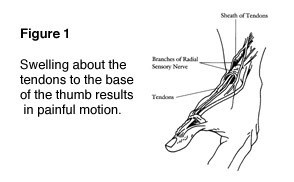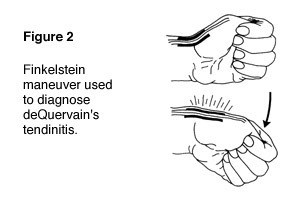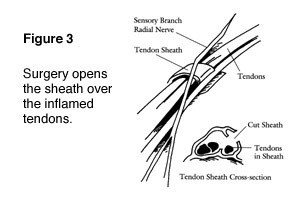Your child accidentally slams a fingertip in a car door. Or you cut off the end of your finger while chopping vegetables. Or you lose the tops of several fingers trying to clear debris from a lawnmower or snowblower.
Fingertip injuries are very common. Accidents can happen at work, play and in the home, crushing, tearing (lacerating) or cutting off (amputating) the tips of fingers and thumbs. The tips of longer fingers get injured more often because they are last to escape when you pull your hand out of harm’s way. You may have damage to skin and soft tissue, bone (distal phalanx) and/or nail and nailbed.
Fingertip injuries
What to do
Always see a doctor right away if you injure the tip of a finger or thumb. Fingertips are rich with nerves and extremely sensitive. Without prompt and proper care, a fingertip injury can disrupt the complex function of your hand, resulting in permanent deformity and disability.
First aid:
- Elevate the injury and apply ice to reduce bleeding and swelling.
- Cover the fingertip wound with a dry, sterile dressing.
- Immobilize the affected hand and wrist with a short splint.
If a fingertip is completely cut-off:
- Gently cleanse the amputated part with water (preferably saline).
- Cover it in gauze wrap.
- Put it in a watertight bag.
- Place the bag on ice.
- Do not put the amputated part directly on ice. You could further damage it.
- Take the amputated part with you to the emergency room.
Medical treatment
Doctors provide individualized treatment for a fingertip injury/amputation based on the angle and extent of the injury, as well as factors related to your health and lifestyle. Tell your doctor how and when the injury happened and:
- If the injury is on your dominant hand.
- What you do for a living and recreational activities.
- If you have other hand problems, osteoarthritis or systemic diseases (i.e., diabetes, rheumatoid arthritis).
- Whether your tetanus immunization is current.
The doctor will probably give you an injection (digital block anesthesia) to stop pain in the affected finger. Then he or she may irrigate the wound with a saline solution; inspect it for exposed bone, soft tissue loss and nail/nailbed injury; and clean (debride) it, removing dead (devitalized) tissue and foreign contaminants to reduce risk of infection.
You may need X-rays to check for fractures. If blood has accumulated beneath the nail (subungual hematoma), your doctor may drain it by piercing through the fingernail. You may also need an antibiotic and/or tetanus shot.
Your doctor formulates a plan for treatment after completely assessing your injury. The goal is a painless fingertip that has durable and sensate skin. Your hand should be able to pinch, grip and perform other normal functions. If possible, your doctor may also try to maintain the finger’s length and appearance and preserve its fingernail.
Soft tissue injury with no exposed bone
Small wound: A small wound to a fingertip’s skin and fleshy tissue (pulp) may close on its own (healing by secondary intention). Your doctor may put a protective dressing over the wound, splint your hand and instruct you to change the bandage at regular intervals. After 48 hours, you may begin range-of-motion finger exercises.
After about a week, you may start daily finger soaks in a warm water-peroxide solution. Complete healing usually takes 3-5 weeks. Then you may need a program of fingertip desensitization.
Large wound: If you let a larger fingertip wound heal itself, you may not get a durable fingertip. Therefore, your doctor may need to transplant a piece of skin from the palm of your hand or other donor sites (skin graft) to cover the injury. The donor site is surgically closed.
Exposed bone
If your injury exposes bone, there is probably not enough tissue available on the fingertip to surgically close it. Your doctor may need to shorten the bone, which generally does not hurt hand function. He or she may also need to transfer a piece of skin and underlying fat and blood vessels from a healthy part of your body to the injury site (reconstructive flap surgery). Depending upon the angle of injury or amputation, the flap may come from:
- The injured finger (triangular volar advancement flap).
- An uninjured finger (cross-finger flap).
- The palm of the hand (thenar flap).
Your doctor sews (sutures) the flap to the defect and surgically closes the donor site. A bulky dressing and splint supports your hand after surgery, with uninjured fingers left free to exercise. A second operation may be necessary in a few weeks to detach the flap from its origin.
If the amputated part is large (includes the entire nail and dorsal skin), your doctor may discuss the pros and cons if replantation is right for you. This involves a long, complicated surgical procedure which may keep you hospitalized for several days.
Young children
Doctors treat fingertip amputations somewhat differently in children under age 6. After thoroughly cleaning and removing fat from an amputated fingertip, your doctor may suture it back on the finger (composite flap). Especially in children under age 2, a relatively normal looking fingertip may form, even if bone was exposed.
Outcome
In many cases, fingertip repair surgery can give you back a large degree of feeling and function. Infection, poor healing, loss of feeling or motion, blood clots and adverse reactions to anesthesia are all possible complications of surgery. You may have mild to severe pain and sensitivity to cold following treatment for a fingertip injury/amputation.
Recovery may take months, and you will probably need hand therapy. This may include hand exercises to improve movement and strength, heat and massage therapy, electrical nerve stimulation, splinting, traction and special wrappings to control swelling.




